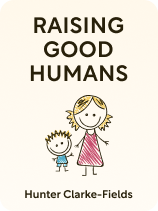

This article is an excerpt from the Shortform book guide to "Raising Good Humans" by Hunter Clark-Fields. Shortform has the world's best summaries and analyses of books you should be reading.
Like this article? Sign up for a free trial here.
What’s the most productive method of conflict resolution for parents? How can you tell your child “no” without causing a tantrum?
Mindful parenting recognizes that conflicts often arise when there are competing needs between a parent and a child. Rather than resorting to power struggles or permissiveness, mindful parenting aims to resolve conflict through mutual understanding and collaborative problem-solving.
Let’s look at how to practice conflict resolution for parents who want to keep their cool.
How Mindful Parenting Can Minimize Conflict
While Hunter Clarke-Fields acknowledges that yelling, timeouts, and threats may get your kid to behave in the short term, especially when they’re young, these strategies will degrade your relationship over time. If your child complies with your request or changes their behavior, it’ll be out of fear, and it will only build resentment and anger.
(Shortform note: Unlike Clarke-Fields, Amy Chua, author of Battle Hymn of the Tiger Mother, defends her more authoritarian approach to raising high-achieving and disciplined children. While Clarke-Fields argues that strategies like yelling, timeouts, and threats degrade relationships and foster resentment, Chua contends that clear boundaries and high expectations lead to immediate compliance and long-term respect. Chua presents her methods, which balance strictness with love and support, as effective in cultivating resilience and producing excellence in a competitive world.)
When you’re having a conflict with your child, says Clarke-Fields, you need to listen, communicate respectfully, collaborate to find a solution, and then take time to reconnect afterward. These are the cornerstones of conflict resolution for parents.
1. Listen
Listening lays the groundwork for a stronger relationship, writes Clarke-Fields. When you really listen to your kids, you send them the powerful message that they matter. It’s not just about hearing what they say, but tuning into their emotions and understanding their perspective. When children feel understood, they’re more likely to open up and share more of their thoughts and feelings. This creates a positive feedback loop where both parent and child feel more connected.
Clarke-Fields says that when conflicts come up, pay close attention to what your child says to figure out the real reasons behind their actions or complaints. This means looking beyond the immediate problem, and understanding the deeper issue—the “why.” Often, there is some need that is not being met. Understanding the unmet need will help you tackle the root cause of the problem instead of just applying quick fixes that don’t solve anything long-term. For example, if your child gets angry when you ask them to clean their room, they may have an unmet need for autonomy or time to relax, or even guidance and instruction on where to start cleaning.
Moreover, says Clarke-Fields, when kids see their parents genuinely trying to understand them without jumping straight into lecturing or punishment, they’re far less likely to get defensive and more likely to be open-minded about finding mutually acceptable solutions.
2. Communicate Respectfully
If you want to be closer with your child, communicate with them respectfully. Clarke-Fields says that when you’re frustrated, it’s tempting to communicate in ways that emphasize your power in the relationship—demanding, threatening, or dismissing—to get your kid to comply with your request. However, these approaches often signal to your child that they’re a problem to be fixed rather than a person with their own thoughts and feelings, which will hurt your relationship over time.
Clarke-Fields writes that to shift away from these counterproductive patterns, refocus requests on “I” statements rather than “you” accusations. Express your own unmet needs instead of attributing blame. For example, instead of yelling “No yelling,” you could say, “When you yell, I feel overwhelmed and can’t focus.” This strategy both allows you to advocate for your needs and serves as a vital lesson for your child. It teaches them to consider how their actions impact others. It also gives them a model to name what they’re feeling when their needs aren’t met.
Clarke-Fields acknowledges that “I-messages” are not perfect tools, but as you use them more, your child will learn they can trust you to treat them with respect and consideration and will be more willing to cooperate. She advises being patient when adopting new communication strategies as it may take time to build back trust with your kid.
3. Problem-Solve Together
While respectful communication might help you manage smaller conflicts, you may need additional tools for bigger conflicts. Clarke-Fields advocates for a strategy she calls “win-win problem solving.”
Win-win problem solving is a collaborative approach to resolving conflicts that ensures everyone’s needs are met rather than having one person begrudgingly concede to the other. According to Clarke-Fields, this method helps find solutions that everyone’s happy with.
Win-win problem-solving includes the following steps:
1. Identify everyone’s needs. Write them down. This helps your child recognize that you believe their needs are important. Sometimes needs are presented as solutions. For example, “I need to get my driver’s license” may be your child’s solution to “I need independence.” You may need to help your child discover an underlying need.
2. Brainstorm as many solutions to the conflict as possible. Encourage your child to present their ideas first. Write down every idea even if you don’t think they’re realistic or you disagree.
3. Identify which solutions meet both of your needs. Circle those solutions.
4. Discuss the solutions thoughtfully, and then choose one. Make sure to add any details that need clarification, especially if there are deadlines or responsibilities to follow through on.
5. Check in on the solution at a later date to see if it’s still meeting everyone’s needs and if you need to make any adjustments.
| The Foundation of Win-Win Problem-Solving The concept of “win-win” problem-solving was popularized by Stephen R. Covey in his 1989 book The 7 Habits of Highly Effective People, where he introduces “Think Win-Win” as one of the key habits. However, the foundations of win-win problem-solving can be traced back to earlier works. Mary Parker Follett, an early 20th-century social worker and management consultant, introduced “integrative” or “win-win” solutions in conflict resolution. Additionally, Roger Fisher and William Ury expanded these principles in their 1981 book Getting to Yes, which outlines strategies for collaborative negotiation aimed at achieving win-win outcomes. Unlike earlier versions of win-win problem-solving, Clarke-Fields’s steps are simplified and more concrete, making them easier for children to understand and follow. For example, Clarke-Fields includes a specific step for visually evaluating solutions that meet both parties’ needs and also stresses writing down needs and solutions. |
4. Reconnect After Conflict
When you’ve had a conflict with your child, it’s important to reconnect afterward. This helps release tension in the moment and also builds a foundation of trust and understanding that strengthens your relationship in the long term.
(Shortform note: Psychologists John and Julie Gottman emphasize that the ability to repair after conflicts is crucial for maintaining a healthy and lasting relationship. Their research indicates that repair attempts play a vital role in restoring emotional connection and trust—which can be damaged during conflicts—demonstrating that both people care about each other’s feelings and well-being. Often involving humor, affection, and a willingness to listen, these small acts of positivity counteract the effects of negative interactions. However, it’s not just about making the repair attempt; both people need to be receptive to and recognize these efforts, reinforcing their bond.)
Clarke-Fields suggests using Zen master Thich Nhat Hanh’s Beginning Anew framework as a tool for reconnection:
1. Start with appreciation. Begin by acknowledging your child’s strengths and positive contributions to the family or the situation. This sets a positive tone and reminds both of you of the value each brings to the relationship.
2. Own your mistakes. Be open about any mistakes you made or things you wish you’d done differently. Expressing these regrets shows your child that it’s OK to make mistakes and that taking responsibility for them is what matters most.
3. Express hurt without blame. Tell your child how certain things they said or did made you feel. This is another opportunity to use “I-messages.” Say “I felt sad when…” instead of “You made me sad by….” This avoids placing blame directly on them, reducing their need to be defensive, and opens up space for empathy.
Reconnecting after conflicts using this framework isn’t just about fixing a single issue—it’s an investment in your parent-child relationship’s emotional depth and resilience for years ahead.
(Shortform note: Clarke-Fields offers a practical application of Thich Nhat Hanh’s “Beginning Anew” framework tailored specifically for parent-child relationships. However, she does not discuss one element of the original framework as articulated by Thich Nhat Hanh. The final step of the process involves both asking for and offering support and forgiveness. In this step, individuals are encouraged to share deeper, ongoing personal struggles or ingrained behavior patterns that stem from past experiences. By being open about these challenges, they enable those around them to gain a better understanding of their internal landscape and find ways to provide meaningful support. This final step may be appropriate depending on your child’s age.)

———End of Preview———
Like what you just read? Read the rest of the world's best book summary and analysis of Hunter Clark-Fields's "Raising Good Humans" at Shortform.
Here's what you'll find in our full Raising Good Humans summary:
- How to use mindfulness to manage emotions—both yours and your child's
- Four steps to resolving conflicts with your child
- Practical strategies for creating a simple, low-stress environment at home






